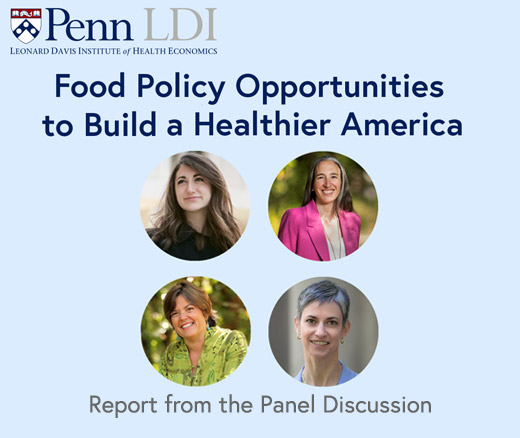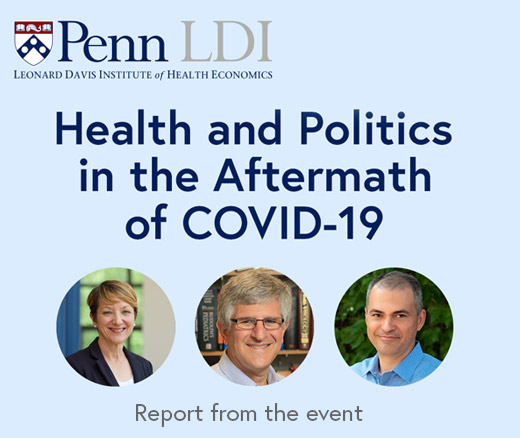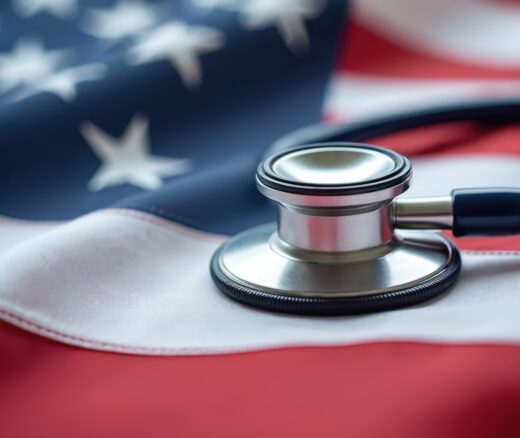
Contradictions That Confuse Federal Food Policies
Announcing Bold New Goals While Crippling the Infrastructure Needed to Achieve Them
Population Health
Blog Post

What can Tweets tell us about the psychological and mental health of emergency medicine physicians and trainees? Quite a bit, according to LDI Senior Fellows Anish K. Agarwal and Sharath Chandra Guntuku.
Agarwal, Guntuku, and their team recently published a study that used machine learning to examine Twitter posts from emergency medicine physicians and residents before and during the COVID-19 pandemic, from January 1, 2018 to March 31, 2022.
Over that period, the language in the clinicians’ Tweets demonstrated shifts in mental well-being, with more negative language used over the course of the pandemic. Expressions of loneliness, anxiety, anger, and depression also increased significantly during COVID-19. Themes also changed over the period from posts related to medical education and gun violence to Tweets about clinical practice related to COVID-19-specific topics such as vaccines, racial equity, and mask-wearing.
Dr. Agarwal is the Chief Wellness Officer for Emergency Medicine and Deputy Director for the Penn Medicine Center for Digital Health at the University of Pennsylvania Health System. Dr. Guntuku is an Assistant Professor of Computer and Information Science and he directs the Computational Social Listening Lab at Penn. They shared their unique perspectives on this project below. Responses have been edited for clarity.
Guntuku: During COVID-19, health care workers were one of the hardest-hit professions, with severe burnout. Many of them use Twitter prolifically to discuss ongoing challenges and concerns, among other topics. In our prior work, we found that language on Twitter could help measure mental health changes in communities at the onset of COVID-19. We wanted to evaluate whether similar methods could provide insight into loneliness expressions and mental health among emergency medicine physicians.
Agarwal: I’ve always been interested in thinking about different ways to help understand and protect the well-being and career of the health care workforce. Social media has become such a part of our everyday lives, both inside and outside of the hospital or clinic, so we thought this would be an interesting opportunity for us to think about what clinicians were saying online and the emotions behind it.

Guntuku: Other social media could potentially work. For example, TikTok is another platform that people in medicine frequently post to and we found that TikTok can provide a measure of public sentiment during a public health crisis. However, the accessibility of data from Twitter for research purposes available through its research program, Academic API, led us to use Twitter.
Twitter has been increasing restrictions to obtain access to data for research purposes which will likely make future research more challenging. At the same time, other platforms such as TikTok and YouTube are making their data more accessible to researchers. Eventually, we want to tap multiple modalities of data from different platforms to better understand and develop interventions for improving the health and well-being of individuals and communities.
Guntuku: In our previous research, we created a data-driven dictionary of words relevant to loneliness on Twitter using machine learning. For this project, we applied that dictionary to the Twitter posts from health care workers to identify expressions of loneliness.

Agarwal: The shifts in what emergency clinicians were talking about on Twitter before and during COVID-19 made a lot of sense to me, and to what I am witnessing and living in the emergency department. What I was most surprised by in this research was the steady rise in loneliness in emergency medicine. The evidence around burnout in medicine is quite substantial along with the evidence around loneliness in the general population. This work has been highlighted recently by the Surgeon General. However, we know less about the relationship between loneliness in medicine and burnout, but in this study, we see some real signals in social media.
Guntuku: Loneliness has been linked to several adverse health outcomes and prior studies show that it is as bad as smoking 15 cigarettes per day and that it could shorten an individual’s life span by as much as 15 years. The increasing trend in loneliness among health care workers is very worrisome. We need to identify how best to build social connectedness programs to better support our health care workforce. Language data from social media is one potential source to identify the intervention targets to do that!
Agarwal: The significant portion here is the amount of rising loneliness in an acutely stressed group of professionals. Loneliness is a part of mental health and career engagement or lack thereof. COVID-19 brought a lot of attention to health care workers, many called us superheroes, but from my perspective, we are normal people who work in an emotionally challenging (and rewarding) field. Despite being around a lot of people each day, it’s easy to feel like you are alone. So, the message for all of us and for our trainees, is that you are not alone and that the work we do can be quite heavy and mentally draining and we should acknowledge that.
Agarwal: Understanding and building mechanisms to adapt in real time to public health issues is important to be able to be responsive and address what patients and communities need. Social media provides one piece of that puzzle; it’s not everything, but it’s also not nothing. These adaptive strategies to do high-level social media listening provide another opportunity to help understand what we can do for people.
Guntuku: When public health crises strike, we would want to rapidly identify who is impacted and what their top concerns are. Our machine learning and natural language processing methods can offer a pulse of how communities feel and what they are most concerned about at the onset of the public health crisis and as it dynamically evolves. This [knowledge] could greatly contribute to providing support and directing resources to the impacted communities in a timely manner.
The study, “Investigating Social Media to Evaluate Emergency Medicine Physicians’ Emotional Well-Being During COVID-19,” was published on May 10, 2023, in JAMA Network Open. Authors include Anish K. Agarwal, Juhi Mittal, Annie Tran, Raina Merchant, and Sharath Chandra Guntuku.


Announcing Bold New Goals While Crippling the Infrastructure Needed to Achieve Them

Promising New Evidence and What’s Next

From 1990 to 2019, Black Life Expectancy Rose Most in Major Metros and the Northeast—but Gains Stalled or Reversed in Rural Areas and the Midwest, Especially for Younger Adults

A Penn LDI Seminar Focuses on Why They’re Important for the Future

Former Philadelphia Health Commissioner Warns That Gutting the CDC, Undermining Vaccines, and Politicizing Science Will Leave the U.S. Dangerously Unprepared for the Next Pandemic

Rural Parents Had More Emergency Visits and Insurance Loss Than Urban Peers, an LDI Study Shows. Integrated Baby Visits Could Help All Parents Be Healthier